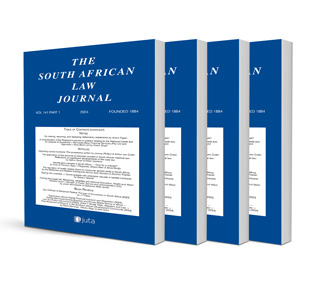The dignity and justice of common purpose in criminal law

Article
The dignity and justice of common purpose in criminal law
Authors: Khomotso Moshikaro & Catherine Willis-Smith
ISSN: 1996-2177
Affiliations: Senior Lecturer in Private Law, University of Cape Town; Fellow in Criminal Law & Evidence, Edinburgh; Visiting Professor in the Common Law, Bochum; Lecturer in Private Law, Stellenbosch University
Source: South African Law Journal, Volume 141 Issue 4, p. 771-803
https://doi.org/10.47348/SALJ/v141/i4a7
Abstract
Although the doctrine of common purpose is accepted and repeatedly applied by South African courts, it has acquired a certain infamy in South Africa’s academy. Some of that infamy is due to the doctrine being abused in the apartheid era. Most of the controversy, however, is because the Constitutional Court has defended the doctrine on consequentialist grounds of crime control. This has led some scholars to assume erroneously that there cannot be a non-consequentialist normative justification for the common purpose doctrine. This article aims to correct what has become an uncritical academic orthodoxy and to provide a non-consequentialist justification for the doctrine. We argue that common purpose is a necessary doctrine if the criminal law is to take the individual agency and dignity of an offender seriously. Much of the criticism of common purpose is anchored in a thin conception of collective agency, which fails to appreciate what the criminal theorist John Gardner terms an agent’s individual teamwork reason. This means that all sorts of ill-conceived objections are thrown at common purpose. Our Constitution rightly vindicates the dignity and justice of common purpose in criminal law.
